The Role of Predators in the Wildebeest Migration In Serengeti
The Wildebeest Migration Cycle
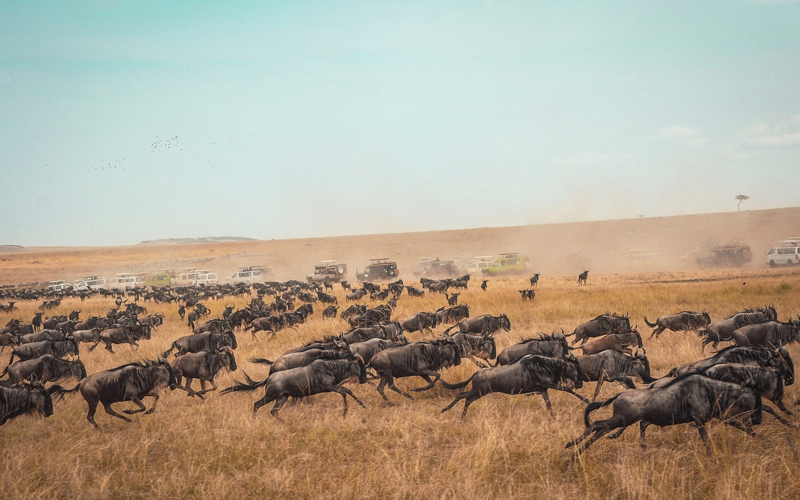
Annual Migration Route
The wildebeest migration follows a roughly circular route that spans Tanzania and Kenya. Starting from the southern Serengeti, the wildebeest moves northwards to the Maasai Mara in Kenya before returning south. This journey is driven by the search for fresh grazing and water, and it covers approximately 1,800 miles annually.Key Stages of the Migration
The wildebeest migration can be divided into several key stages: the calving season in the southern Serengeti, the trek towards the Grumeti River, the crossing of the Mara River, and the return journey to the Serengeti. Each stage presents its challenges and opportunities for both the wildebeest and their predators.Main Predators of Wildebeest
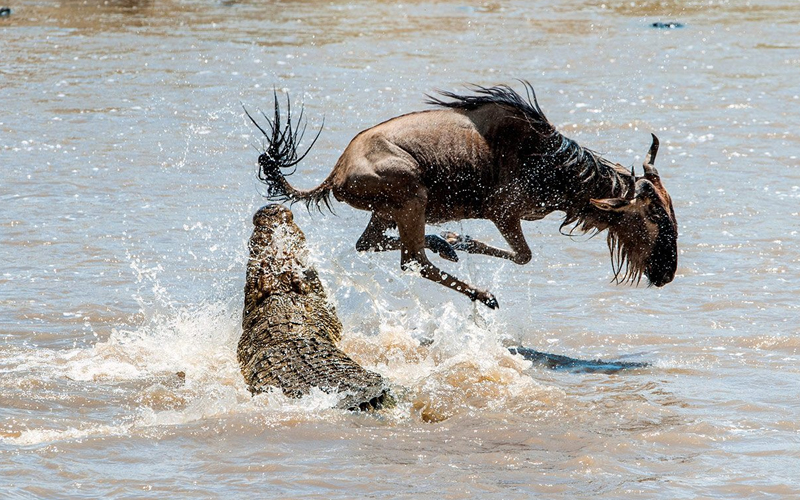
Lions
Lions are perhaps the most iconic predators of the wildebeest. These powerful hunters often target the weakest members of the herd, including young calves and injured adults. Lions typically hunt in pride, using their numbers and strategic coordination to bring down prey.Hyenas
Hyenas are opportunistic predators and scavengers. They have strong jaws and a high tolerance for carrion, which allows them to consume almost every part of their prey. Hyenas often hunt in packs and can successfully bring down even healthy adult wildebeest.Cheetahs
Cheetahs are known for their incredible speed and agility. Unlike lions and hyenas, cheetahs prefer to hunt alone or in small groups. They target young or isolated wildebeest, relying on their burst of speed to outpace their prey in short chases.Crocodiles
Crocodiles pose a significant threat to wildebeest during river crossings, particularly at the Mara River. These ambush predators lie in wait underwater, striking swiftly to drag their prey into the depths.Predator-Prey Dynamics
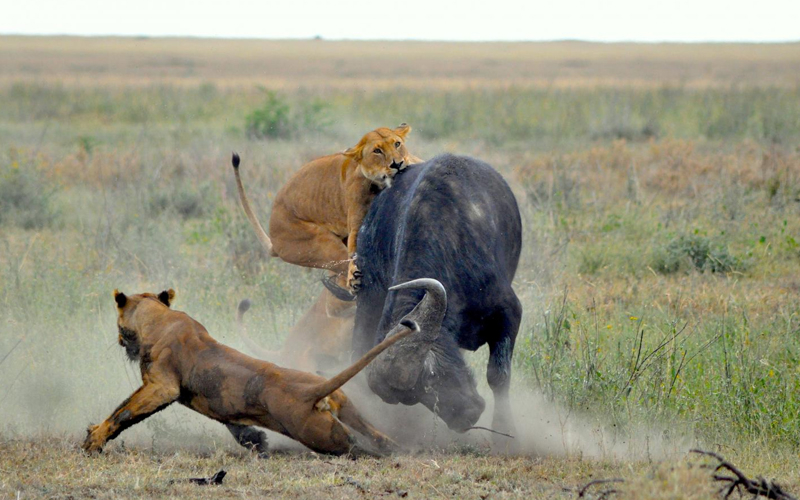
Natural Selection
Predation is a key driver of natural selection. Predators tend to target the weakest, slowest, and most vulnerable members of the wildebeest herd. This selective pressure ensures that only the strongest and most fit individuals survive and reproduce, contributing to the overall health and resilience of the population.Population Control
Predators help control the wildebeest population, preventing overgrazing and ensuring that the ecosystem can support a diverse range of species. Without predators, the wildebeest population could grow unchecked, leading to depletion of vegetation and subsequent starvation.Predatory Behavior and Strategies
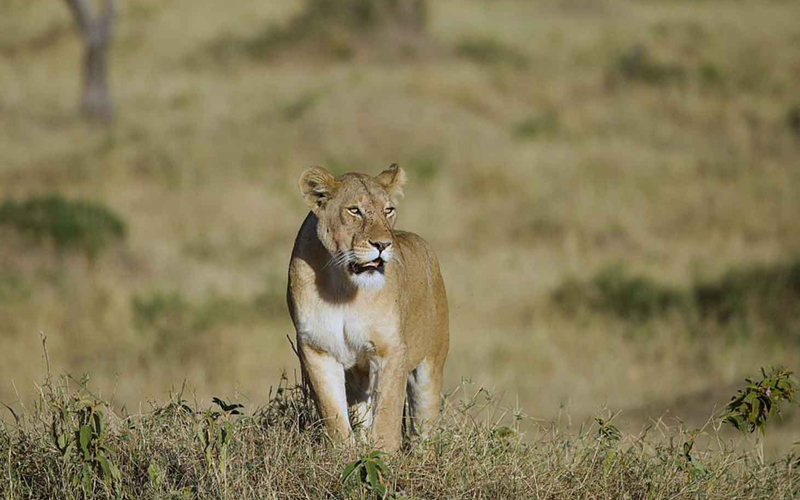
Hunting Techniques
Different predators employ various hunting techniques to catch wildebeest. Lions may use stealth and ambush tactics, while hyenas rely on endurance and teamwork. Cheetahs use their speed to outrun their prey, and crocodiles use surprise attacks during river crossings.Group Dynamics in Predation
Predators often hunt in groups to increase their chances of success. Lion pride coordinates their attacks to isolate and take down wildebeest, while hyena clans use their numbers to overwhelm and exhaust their prey. These social hunting strategies are crucial for capturing large, fast-moving animals like wildebeest.Impact of Predators on Wildebeest Behavior
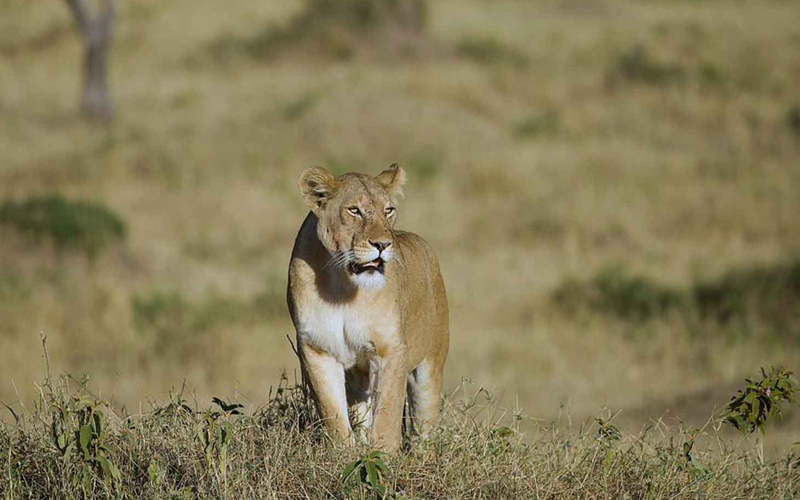
Migration Patterns
The presence of predators influences the migration patterns of wildebeest. The herds move in large numbers to reduce individual predation risk, and they often choose routes that minimize exposure to predators. The timing and direction of the migration can also be affected by predator activity.Herd Defense Mechanisms
Wildebeest have evolved various defense mechanisms to protect themselves from predators. They travel in large herds, which can confuse and overwhelm predators. Calves stay close to their mothers for protection, and the herd’s constant movement helps to avoid predation hotspots.Ecological Balance and Biodiversity
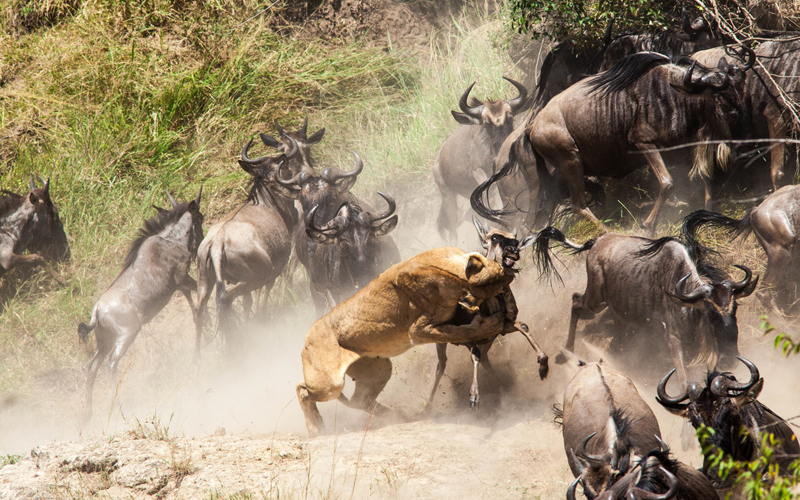
Role in Maintaining Healthy Populations
Predators play a crucial role in maintaining healthy wildebeest populations. By preying on the sick, old, and weak, they help ensure that only the fittest individuals survive. This natural selection process keeps the gene pool strong and promotes the overall health of the population.Contribution to Biodiversity
The predation pressure exerted by predators contributes to the biodiversity of the Serengeti-Mara ecosystem. It creates a dynamic environment where multiple species can coexist, each playing its role in the food web. This biodiversity is essential for the resilience and stability of the ecosystem.Case Study: The Mara River Crossings
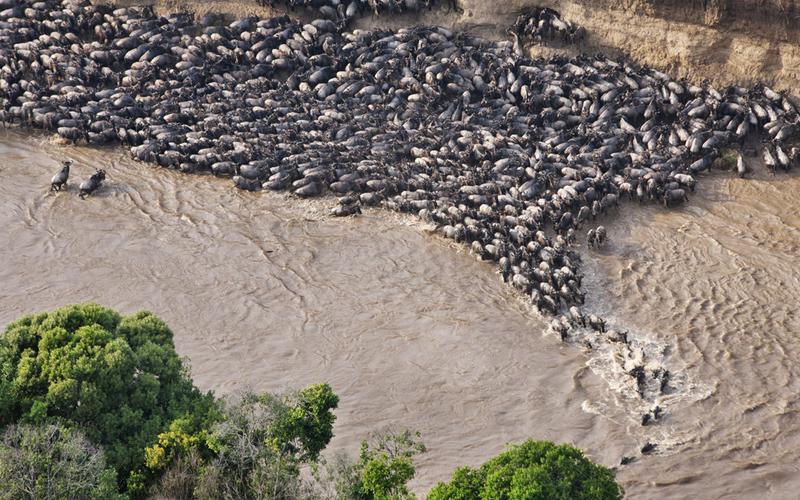
Predation at the River Crossings
The Mara River crossings are one of the most dramatic and perilous parts of the wildebeest migration. As thousands of wildebeest plunge into the river, they face the dual threats of drowning and crocodile attacks. The riverbanks are often lined with predators waiting for an easy meal, creating a deadly gauntlet for the migrating herds.Survival Strategies of Wildebeest
To survive the river crossings, wildebeest rely on strength in numbers. They often hesitate before crossing, gathering in large groups to reduce individual risk. Once they start, the crossing is a frantic dash to the other side, with many falling victim to the waiting predators. However, the sheer number of wildebeest ensures that many make it through safely.Human Influence and Conservation Efforts
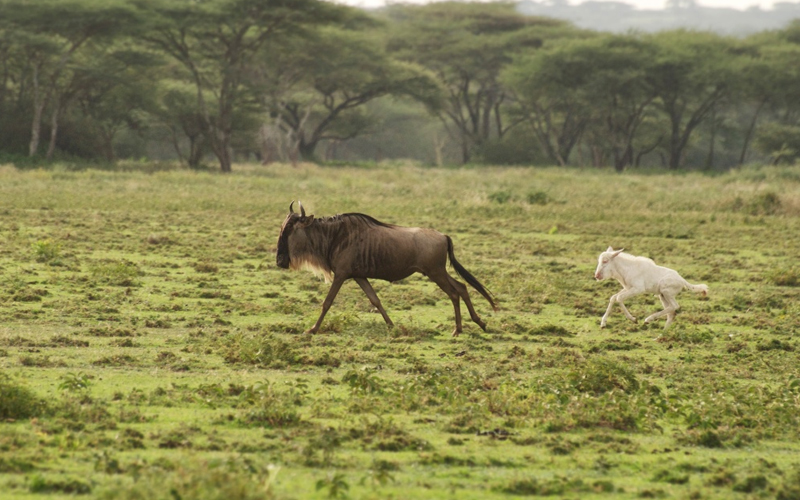
Impact of Poaching on Predator Populations
Poaching has a significant impact on predator populations, particularly for species like lions and cheetahs that are targeted for their skins and other body parts. The reduction in predator numbers can disrupt the ecological balance, leading to overpopulation of prey species and degradation of the habitat.Conservation Programs
Various conservation programs aim to protect predator populations and the broader ecosystem. Initiatives such as anti-poaching patrols, community education, and habitat restoration are crucial for preserving the natural dynamics of the Serengeti-Mara ecosystem. Supporting sustainable tourism also helps fund conservation efforts and provides economic benefits to local communities. Predators play an indispensable role in the wildebeest migration, contributing to the ecological balance and the overall health of the ecosystem. Their presence shapes the behavior and movement patterns of the wildebeest, ensuring that the fittest individuals survive and the population remains robust. Conservation efforts are essential to protect these predators and the unique dynamics of the migration, ensuring that future generations can witness this incredible natural phenomenon.FAQs
Why are predators important in the wildebeest migration?
Predators are crucial for maintaining the ecological balance during the wildebeest migration. They help control the wildebeest population, ensuring that only the fittest individuals survive. This natural selection process keeps the population healthy and prevents overgrazing.How do wildebeest defend themselves against predators?
Wildebeest defend themselves by traveling in large herds, which reduces the risk for individual animals. Calves stay close to their mothers for protection, and the herd’s constant movement helps avoid predator hotspots. In dangerous situations, wildebeest can also run at high speeds to escape predators.What impact do human activities have on predator-prey relationships?
Human activities, such as poaching and habitat encroachment, significantly impact predator-prey relationships. Poaching reduces predator numbers, which can lead to overpopulation of prey species and habitat degradation. Habitat encroachment disrupts migration routes and reduces the availability of food and water, stressing both predators and prey.How do predators influence the migration patterns of wildebeest?
Predators influence migration patterns by creating areas of high risk that wildebeest seek to avoid. The presence of predators encourages wildebeest to travel in large groups. Embark on an extraordinary journey through Tanzania’s stunning landscapes and wildlife havens. Witness the iconic Serengeti, where the mesmerizing wildlife migration unfolds before your eyes. Marvel at the rich biodiversity of the breathtaking Ngorongoro Crater. Conquer the thrilling ascent of Kilimanjaro, Africa’s highest peak, for an unforgettable adventure. Finally, unwind on the tranquil beaches of Zanzibar. Join us for the ultimate Tanzania Safari tour, where every moment promises breathtaking beauty and adventure!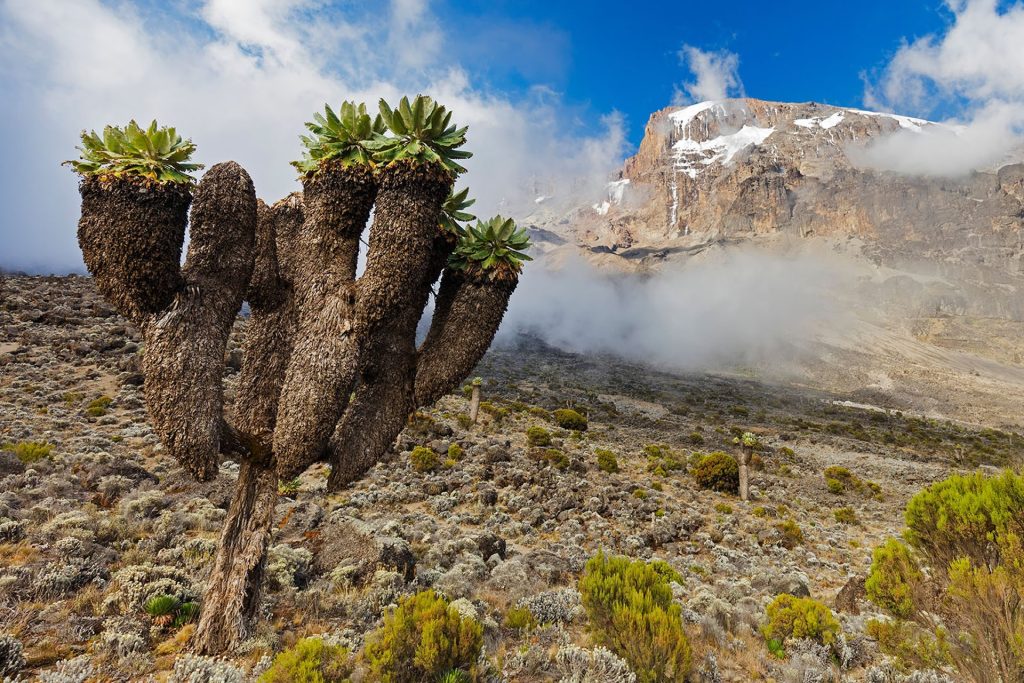

Kilimanjaro Climb
Book Hiking tours to Mount Kilimanjaro, The Roof of Africa, Best Prices Guarantee!
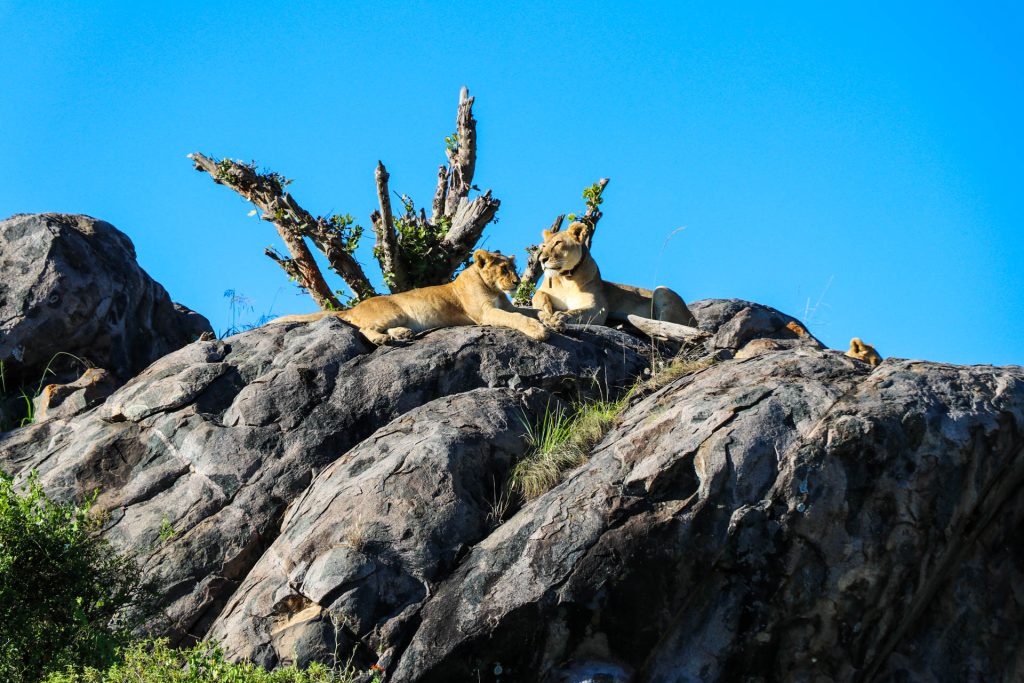

Tanzania Safari Vacations
Explore our Unforgettable Tanzania Budget, Mid-Range & Luxury Wildlife Safari.
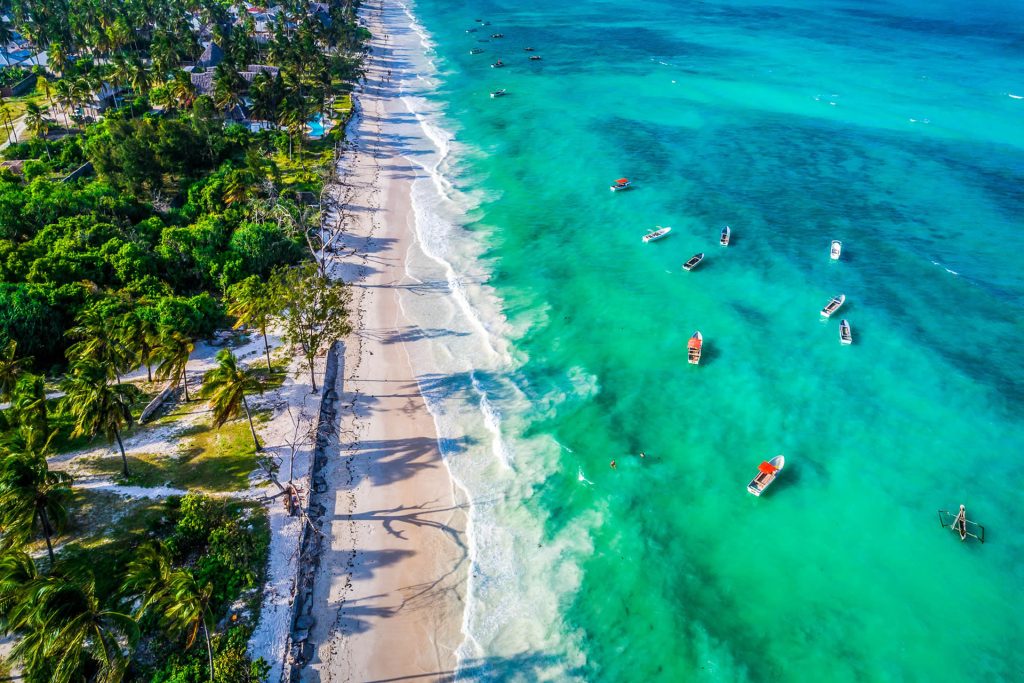

Beach Excursions
Visit Zanzibar Island and Coastal Tanzania for beach tours before and after a climb or safari.
ABOUT BOKER ADVENTURE…
Boker Adventure is a Tanzania Tours company located in Moshi town along the slope of Mount Kilimanjaro committed to offering local experiences such as Mount Kilimanjaro climbing experiences, Tanzania Wildlife Safari Experiences, Tanzania cultural tourism, bike tours, honeymoon, Air Ticketing and beach holidays. At Boker Adventures, we offer you a unique and comprehensive selection of Tanzania Private tours that are tailor made to suit your schedule and budget.
Please give us an opportunity to organize your African dream holiday!.








